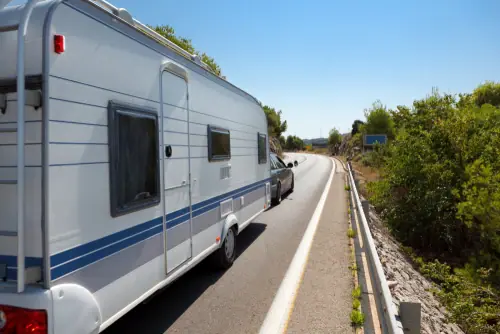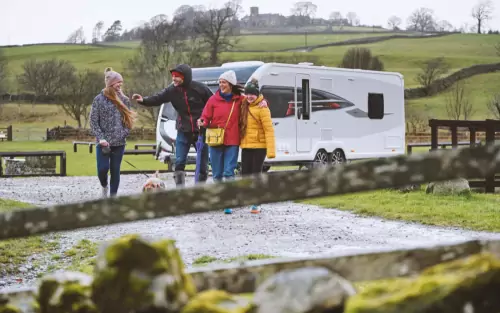As colder weather sets in across the UK, your caravan faces risks from frost, damp, and neglect. At Blackmore Vale Leisure, we believe that a few smart steps today can save you costly repairs tomorrow. This guide will walk you through how to winterize your caravan — from water systems to electricals — so that it emerges in spring as fresh and ready as ever.
Why Winterizing Your Caravan Matters
-
Water left in pipes or appliances can freeze, crack components, and cause leaks.
-
Poor ventilation and trapped moisture lead to mould, mildew, and structural damage.
-
UV, frost, and debris can deteriorate seals, roofs, and surfaces over winter.
-
A dead battery or corroded electrical system can spoil your first trip of the season.
-
Rodents see stored caravans as cosy hideouts — seals and openings need protection.
Proper winter care is more than maintenance — it’s insurance for your caravan’s longevity.
Caravan Winterization Checklist
Here’s a structured, step-by-step process to winterize your caravan effectively:
1. Site Selection & Storage Setup
-
Choose well-drained ground. Avoid soggy surfaces or low spots that collect water.
-
Keep distance from trees or overhangs. Falling branches, leaf debris, bird droppings all pose risks.
-
Ensure secure access and locking measures. Use hitch locks, wheel clamps, and alarms if your insurer demands them.
-
Allow airflow around the caravan. Avoid tight fences or obstructions that block ventilation.
2. Exterior Care & Protection
-
Deep clean the exterior. Use caravan-safe products to remove dirt, road salt, algae, and more.
-
Inspect seals, windows, edges. Re-seal any cracked or worn sections.
-
Avoid high-pressure washing on trims. Too much force can force water under seals.
-
Apply breathable cover or protective coating. A cover helps but must allow moisture to escape.
-
Check external lights and wiring. Remove lenses, clean, inspect, reseal as necessary.
-
Lubricate moving parts. Door hinges, corner steadies, wheel mechanisms, etc.
3. Tyres, Wheels & Underbody
-
Inflate tyres slightly more. Helps reduce the risk of flat spots during long storage.
-
Reposition occasionally. If you can, shift the caravan a few inches every few weeks to relieve pressure on a single spot.
-
Use chocks (but avoid full hub wrapping). Don’t trap moisture around wheel hubs.
-
Verify insurer rules. Some policies don’t allow “jacking” or alternative support methods.
4. Water System Drainage & Protection
This is one of the most crucial steps:
-
Open all taps (hot & cold). Leave them open to allow full drainage.
-
Open drain valves and lower points. External drains, water heater plugs, etc.
-
Remove filters, shower heads, etc. Clean, dry and store them.
-
Run the pump briefly. To purge residual water (check your appliance manual).
-
Drain all portable tanks. E.g. fresh water containers or Aquaroll units.
-
Use a flushing or drainage kit (optional). Some systems (e.g. compressed air flushers) help remove stubborn residual water.
-
Toilet & cassette care:
– Empty and clean the cassette fully.
– Drain freshwater tanks.
– Lubricate seals and leave valves partially open if safe.
5. Interior Cleaning & Ventilation
-
Deep clean everything. Vacuum, wipe, wash curtains, upholstery, cabinets. Remove all food and clutter.
-
Fridge/freezer maintenance: Clean, dry, and leave doors slightly cracked if safely possible.
-
Open cupboard doors. Help airflow inside storage areas.
-
Avoid pressing mattresses against walls. Leave some spacing so air circulates.
-
Use moisture absorbers. Silica gel packs, dehumidifiers, or moisture traps help reduce condensation.
-
Check and treat mould. Use safe mould-removal products, ensuring they’re suitable for caravan finishes.
-
Blinds, curtains, furniture: Avoid tightly closed or compressed setups.
6. Electrical & Battery Care
-
Remove the battery (if possible). Store it on a maintainer or trickle charger.
-
If battery stays installed: Isolate it, switch off all 12 V circuits, appliances, and radios.
-
Clean terminals and connections. Use protective coatings (e.g. a light grease) to limit corrosion.
-
Inspect external cables and connectors. Check for wear or cracks; clean and reseal as needed.
7. Gas System Precautions
-
Shut off gas valves/regulators. Make sure the supply is isolated.
-
Remove gas bottles (where insurer allows). Store them outdoors in upright, ventilated, secure enclosures.
-
Cap pipework. Use correct safety caps.
-
Inspect the gas locker. Ensure it’s dry and ventilated, free from blockages.
8. Final Lock-Up & Security Steps
-
Lock all windows, vents, rooflights. Ensure they’re properly shut and sealed.
-
Release the handbrake. Use corner steadies instead to avoid brake seize.
-
Fit wheel and hitch locks. A visible deterrent and often insurer requirement.
-
Remove valuables. Take out electronics, cushions, journals, anything portable.
-
Schedule periodic inspections. Pop in regularly (if possible) to air it out, run systems briefly, check for leaks or pests.
-
Book a spring service in advance. That way your caravan is already in line for readying when warmer seasons return.



